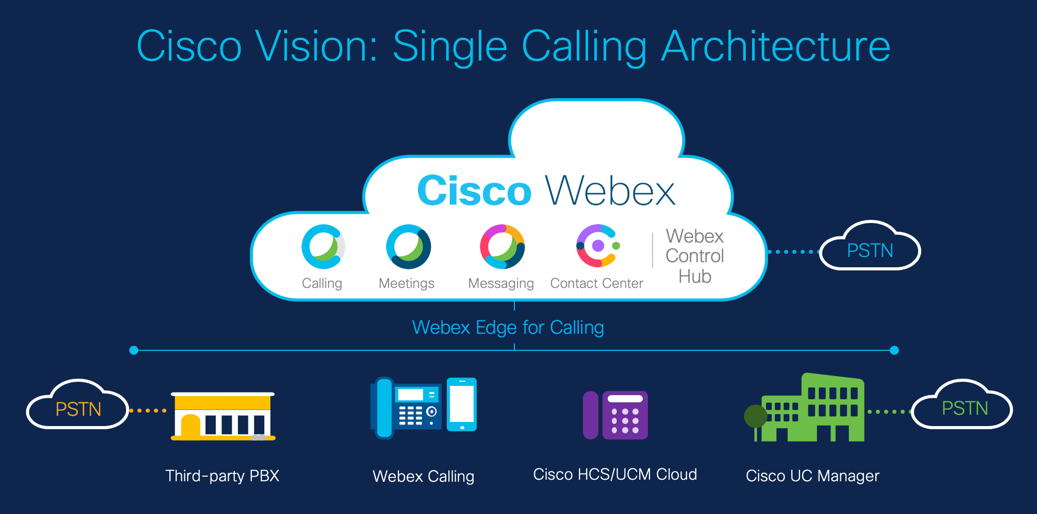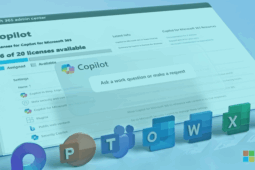Going Cloud? Get There on Your Own Time with Cisco Webex and Stack8
Begin with the End in Mind – A Successful Digital Transformation
Today’s large enterprises have invested in on-premises PBXs and VoIP calling systems over the years and expanded through growth or acquisitions. For any given enterprise, these systems now connect multiple PBXs at different sites with multiple PSTN interconnects and multinational deployments.
The result is a mixed network made up of systems at various stages in their depreciation lifecycles. This disparate set of PBXs leads to inconsistent features and user experiences, high networking and telco costs, along with the added complexity of multi-vendor management.
This makes it difficult to drive new innovations, as enterprises simply cannot afford to replace these systems all at once. To support their digital transformation initiatives, these enterprises need a solution that:
- Provides flexible migration paths to the cloud
- Simplifies operations and lowers expenses
- Delivers seamless and consistent experiences
- Improves workplace productivity and process efficiencies
- Scales with reliability and security
- Protects their current investments
Announcing Next-Gen Secure Path to Cloud Calling and Collaboration
To address these challenges, Cisco is announcing Webex Edge for Calling, which offers the following benefits:
Enables flexible cloud migration while protecting on-premises investments
Connect all Cisco and third-party PBXs to Webex Calling to get a global dial plan and optimized call routing, add cloud innovations, and move to the cloud at a pace that makes sense for their business.
Example: Connects Webex Calling, Cisco Unified Communications Manager (CUCM), CUCM Cloud and third-party PBXs
Simplifies operations and lowers expenses
Centralize application management, databases and enterprise services, resulting in reduced operational and capital costs by reducing network PSTN expenses.
Example: Webex Control Hub and Webex Calling Network Services
Creates one unified user experience
Gain a smooth and more productive, consistent user experience across all collaboration workloads (calling, messaging, meetings, customer engagement) and devices.
Example: New Webex unified modular app and Webex Teams support for Webex Calling, CUCM, Hosted Collaboration Solution (HCS)
Accelerates workplace transformation
Add advanced cognitive collaboration features to in-office, mobile, remote and contact center users, with application and device integrations that deliver a more completely connected user experience that drives productivity.
Example: Webex Teams and Webex unified modular client with cognitive capabilities, including People Insights and Voicea transcriptions
Allows for an instantly global enterprise
Adopt a worldwide cloud calling solution, with enterprise-grade scalability, security, features, and bundled or BYO PSTN connectivity, for instantly global calling delivery.
A Simple and Secure Migration Path
Webex Edge for Calling enables a unified calling architecture that connects Cisco UCM, Cisco UCM Cloud, HCS, and/or third-party PBXs directly into the Webex Calling cloud, providing flexible migration paths for adopting innovative cloud services, while protecting customers’ on-premises investments. See Figure below.

Webex Edge for Calling enables three key phases of migration to the cloud:
- Connect: Begin the migration to the cloud with Webex Calling for branches and knowledge workers, with site-to-site calling across all Cisco calling platforms.
- Centralize: Centralize call routing with a cloud-based dial plan across Cisco platforms and 3rd party PBXs to simplify management and lower costs while leveraging existing investments.
- Unify: Unify and optimize the user experience through a single client, to deliver a set of consistent collaboration services across your enterprise
Unified User Experiences without Disruption
Take, for example, a business that has its headquarters served by a Cisco UCM or Avaya platform. The platform is still under maintenance and not ready to be replaced, but they can get significant PSTN savings by moving their branch offices to the cloud, using Webex Calling. With Webex Edge for Calling, the PBX platform at HQ is connected to Webex Calling, which allows users to make calls between the HQ and branch offices using private dialing plans that route all on-network traffic to the cloud, often resulting in substantial savings. This also ensures full HD quality audio and video for all on-net traffic. Services like auto attendants can be centralized in the cloud through Webex Calling, yet still connect to users in the branch offices, as well as headquarters. Every user will benefit by using one Webex experience for all their collaboration activities – one unified end-user experience across the enterprise.
Our channel partners are already implementing these solutions to help their business customers connect to the cloud and gain an advanced, intelligent collaboration experience without disruption.
Cloud First, Not Cloud Only
This single calling architecture, enabled by Webex Edge for Calling, is a key differentiator for Cisco vs. our “cloud-only” competitors that require the entire in-place PBX network to be replaced. Our calling portfolio allows customers to choose the best calling platform and deployment model for their business and define a strategic timeline for their cloud migration, based on their business priorities. This model enables our customers to take full advantage of cloud innovation now, without the business disruption of a flash-cut cloud migration. With Webex Edge for Calling, the cloud transition is driven by the customer, not a one-size-fits-nobody vendor strategy. Cisco customers get the benefits of cloud innovation today while extending the value of their investments in on-premises systems and user experiences.
If you are looking to move to the Cloud, our team of experts are here to help
Ready to take your unified communications from headache to hassle-free?
No throwing darts at proposals or contracts. No battling through the back-end. No nonsense, no run-around.



